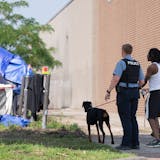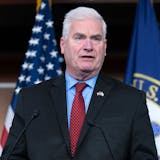Searing heat in Minnesota is forcing school districts — already concerned about indoor air quality amid the pandemic — to consider further mechanical upgrades to buildings without air conditioning.
The temperature topped 100 degrees in at least one Minneapolis classroom in June before the district shifted students in 15 buildings without air conditioning to distance learning. Bloomington schools brought in portable air conditioning units to keep kids cool. St. Paul called off school altogether, ending the year a few days early.
The disruption further highlighted how the mechanical systems within school buildings play a key role in providing a safe learning environment for students. The topic had already gained fresh attention during the pandemic, as schools rethought ventilation and air filtration to prevent the potential spread of COVID-19. Now, as districts make their plans to spend another wave of federal money from the American Rescue Plan, the systems upgrades may get pushed ahead.
"COVID was and is extremely difficult, but in the end, I am excited for the opportunities that may come out of it," said Angela Vreeland, the indoor air quality coordinator for St. Paul Public Schools. "People are now so much more aware of indoor air quality and the importance of ventilation and filtration. We have an opportunity if we can use additional funding to make improvements."
Before students returned to in-person classes, St. Paul increased the level of filtration in its buildings, a longstanding goal that became a priority during the pandemic, said Tom Parent, director of facilities.
About one-third of the district's buildings are air-conditioned after a push over the last five years to add cooling systems to about 1 million of the 7.3 million square feet of school buildings. Four schools in the district have HVAC (heating, ventilation, air conditioning) upgrade projects underway, and seven additional schools have been identified as needing them, Parent said. The timeline for that work could be moved up if the district decides to use federal money to pay for it.
"We're fairly aggressively adding AC and humidity control into our buildings," Parent said, adding that the district is examining how to handle rising temperatures and extreme weather.
The discussions depend on the age of the buildings and the options available. The St. Paul district has buildings of many ages, including one that dates to 1890. Old doesn't inherently mean bad, Parent said, but upgrades aren't one-size-fits-all.


